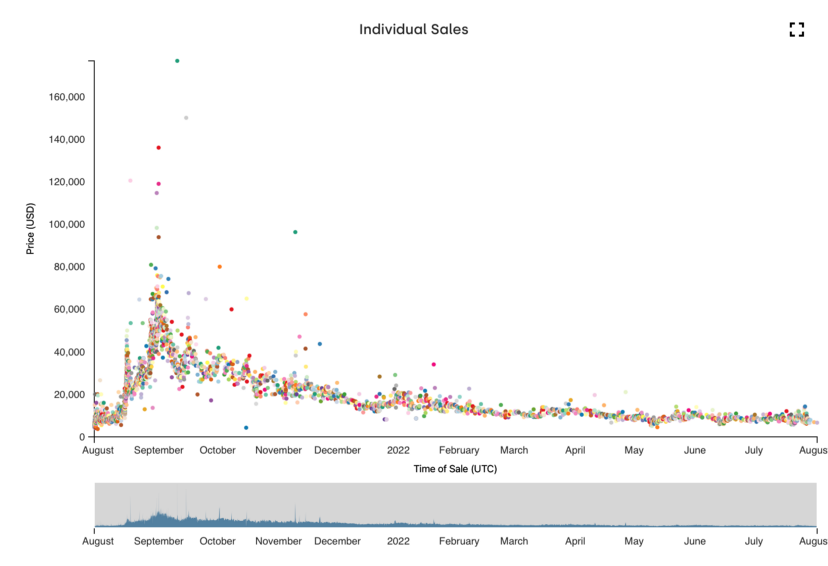
One of the richest artist in the UK, Damien Hirst, will burn thousands of his paintings at Newport Street Gallery in London this September as part of his year-long NFT project, titled The Currency.
On the opening day visitors of Hirst’s private museum viewed thousands of oil-on-paper paintings he created back in 2016 and linked to NFTs in 2021. All sales and resales were handled by Heni NFT marketplace, a 99% energy efficient blockchain created by Ethereum and co-founded by Joe Lubin.
Initially buyers could purchase one of the 10,000 NFTs for $2,000 each, and then they were asked to choose whether to keep it or trade it for the physical work. In case they chose to keep the NFT, the physical work connected to it would eventually be burnt. The works are going to be destroyed daily during the run of the show culminating on Frieze week in October.
Collectors had to decide before 27 July. Eventually, 4,851 people wanted to keep NFTs, while 5,149 collectors chose to trade their NFTs for the physical versions. Sales of Hirst’s NFTs peaked September 2021 when the project was launched. However, volumes have plummeted in recent months with the general crypto market crash.
The maximum price for a piece was $176,779, with the average buyer spending $21,037. The most recent sale was on August 2 for $6,672 USD. Total sales for the collection are almost $89,4 million.
This project is not the first one by Damien Hirst that interacts with the market. With the diamond-encrusted human skull that was allegedly sold for £50m, he pre-dated the current trend for tokenising works of art, and paid for the skull himself along with other members of the consortium. Then he sold 287 works directly from his studio at Sotheby’s for £111m. In ‘The Currency’ Hirst views art as “a currency and a store of wealth”, as art can become currency and vice versa. Amidst dropping crypto prices, some people still choose NFT art pieces from The Currency project, although resales of Hirst’s physical paintings are faring way better: one was sold at Phillips in London for £18,900 earlier this year.
Other renowned artists are becoming more and more interested in NFTs. For instance, performance artist Marina Abramovic, in her attempt to raise money for fixing the current global catastrophe, is launching her first NFT project called The Hero 25FPS. Her first performance on the blockchain will invite people to purchase either a single frame (.jpg) or a sequence of frames (.gif) to acquire performance time. Following this, a percentage will fund new heroism.
In June Takashi Murakami, the world-famous Japanese artist, won the Best Traditional Artist turned NFT Artist category at the second annual NFT Awards by NFT.NYC with his Murakami.Flowers Seed, a 11,664-strong NFT collection. Images were sold as seeds, which became flowers revealed at new drops. With the NFT market drop he first apologised to his audience, but then celebrated the award on Twitter.
Linking NFT assets to physical objects of art or even performances is an exciting trend, however, with the market facing a crypto winter, recognised artists might not be interested in producing NFT art. Let’s see whether Damien Hirst will be the last to try out NFTs or encourage others to join.
